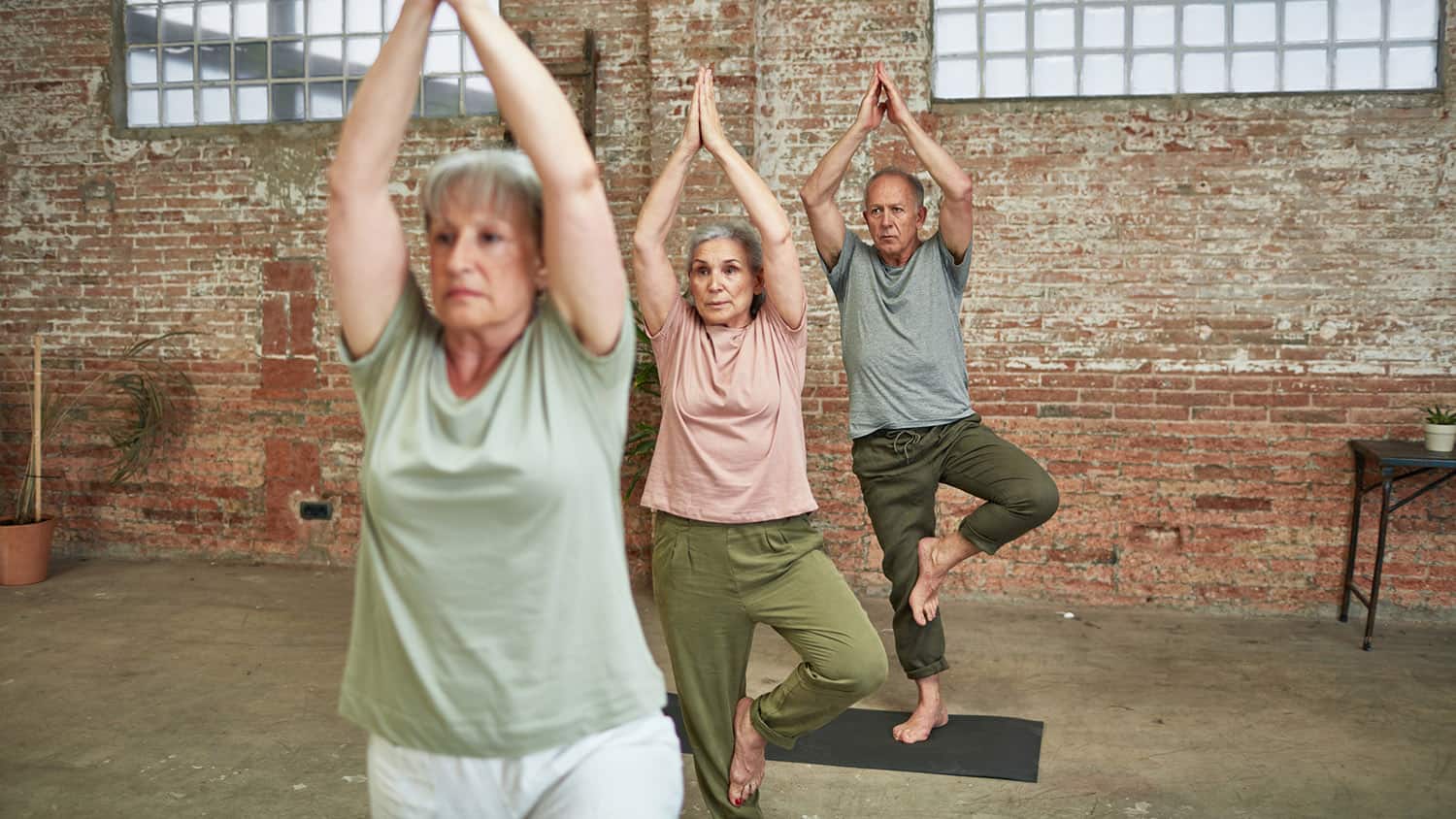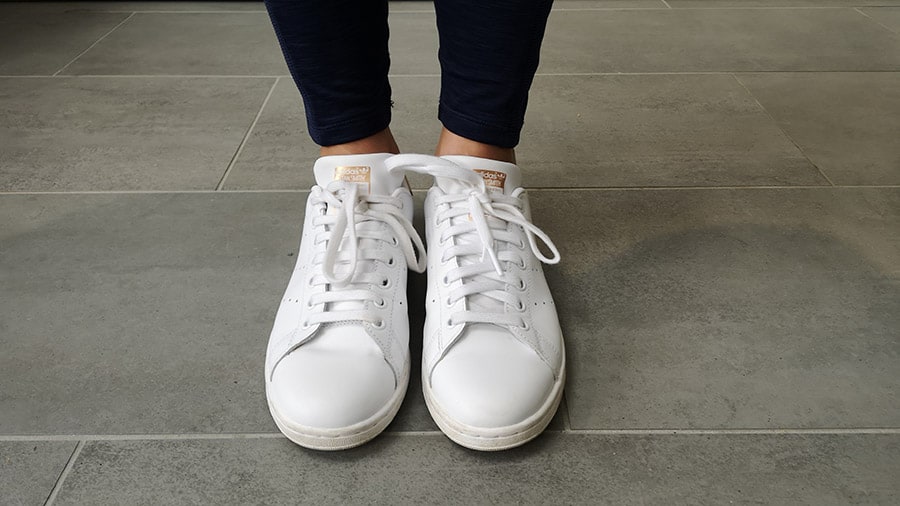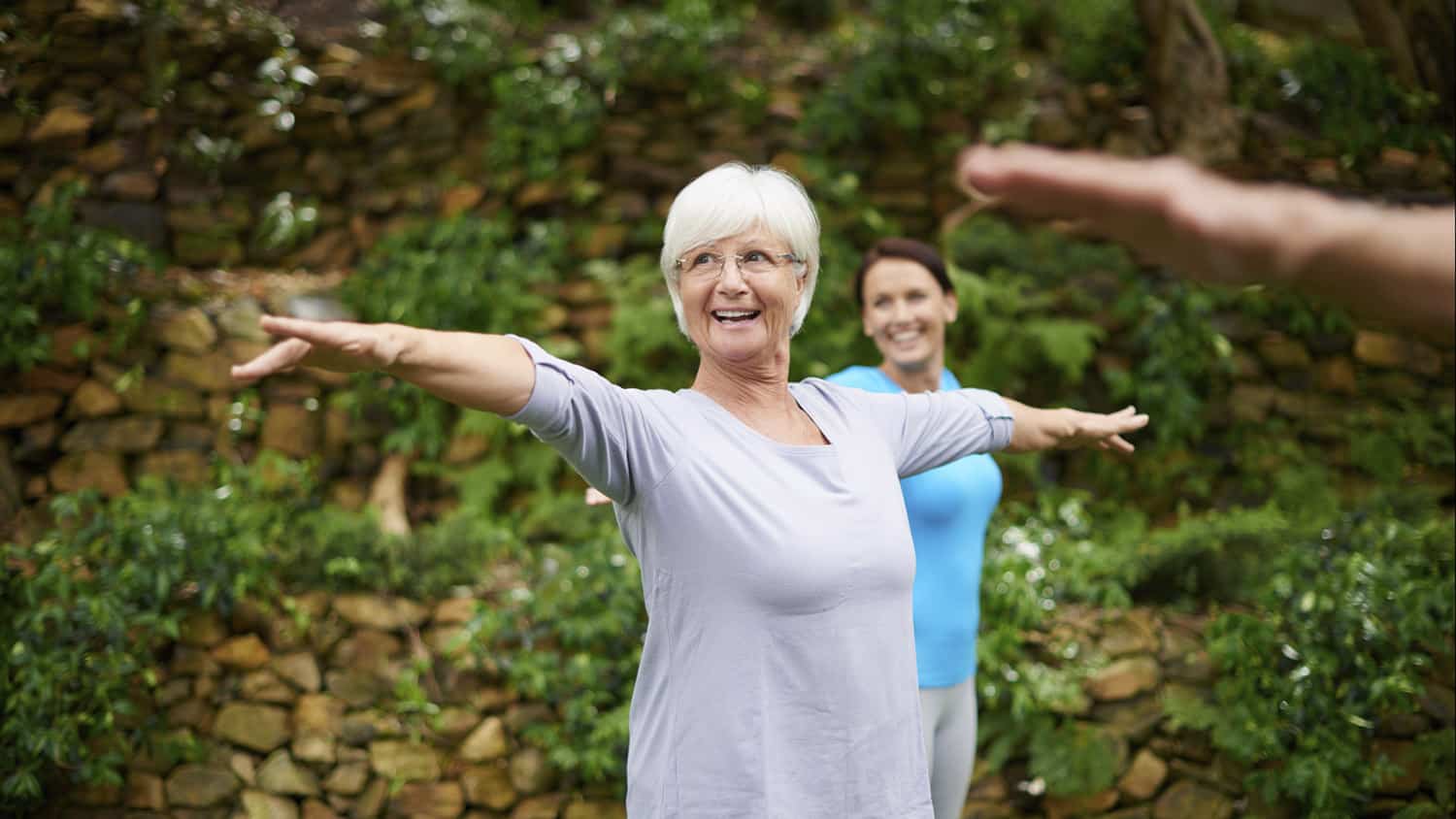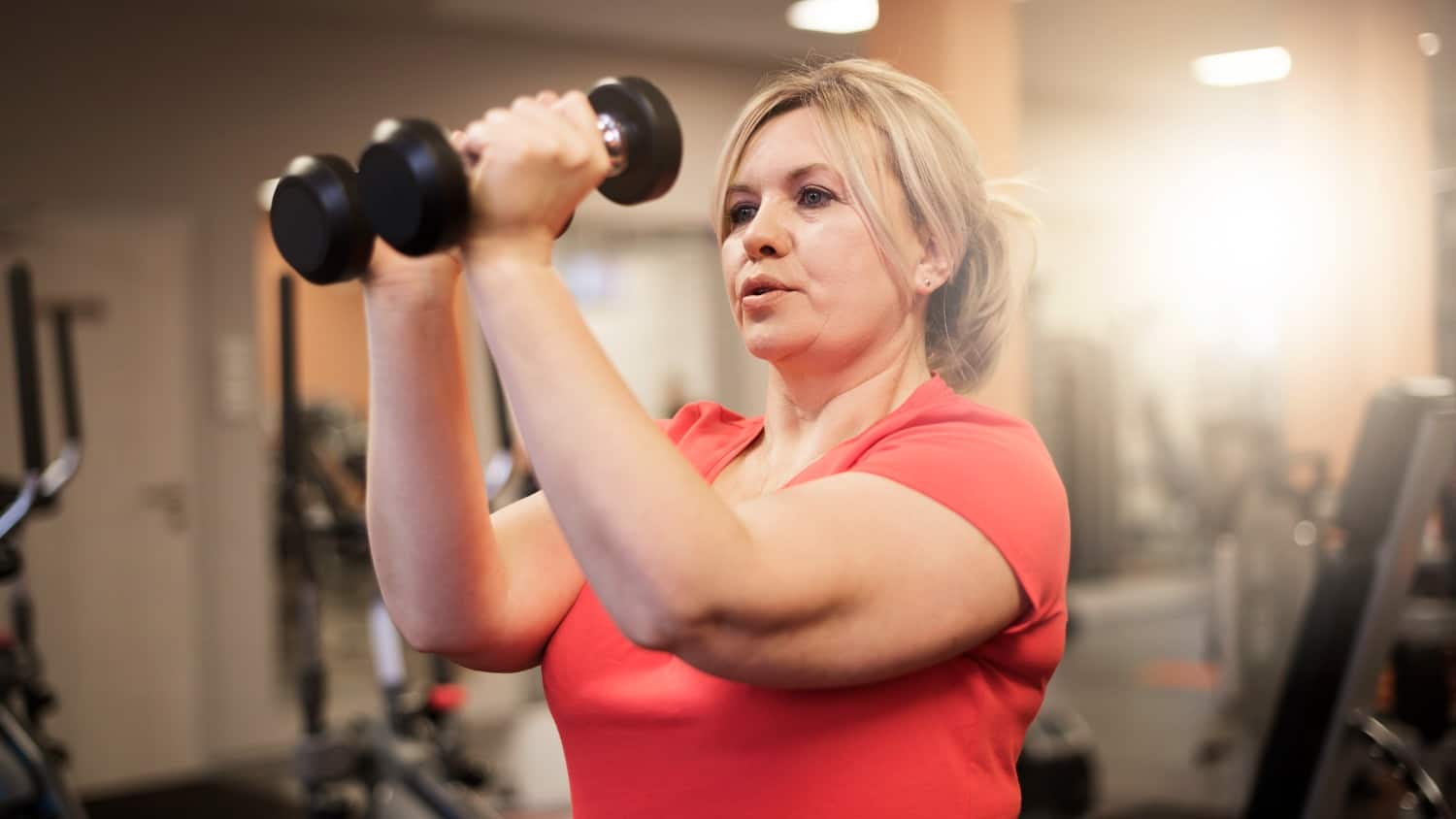
Standing on One Leg to Improve Your Balance? 3 Ways to Get More from Your Balance Exercises
Do you sometimes try to stand on one leg while brushing your teeth or waiting for the kettle to boil?
As a woman over 60 you know it’s good for your balance, and it does seem to get easier if you do it regularly. That means your balance is improving, which is great.
Doing something small to help your balance every day (or almost every day!) is the best way to go. It becomes part of your daily routine, and your body will respond better to a small daily stimulus than a bigger burst once every week or two.
It is crucial, however, to keep building on improvements. (Your balance can never be too good!) It is also important to keep things enjoyable.
So, let me introduce three ways you can keep the one-leg stand interesting and challenging.
Note: If you find standing on one leg too hard, don’t stop reading! Scroll down below the three challenges to see the different foot positions you can try (with photos).
Challenge 1: Time
You might already be doing the time challenge. You are probably counting and might be vaguely trying to increase your time.
That’s good because standing on one leg for a period of time is a great measure of your balance capabilities.
So how can you be more intentional and challenging about it?
Try this: Keep a record about how many seconds you can stand on one leg for. Seeing how far you have come will motivate you to challenge yourself further.
Another idea: Challenge yourself to keep increasing your time – perhaps to add 1 second a day. Even one second a week will add up – over a year you could go from a 10-second one-leg stand to just over a minute.
Challenge 2: Eye Movements
We depend heavily on our vision to maintain our balance. That’s why you may have been told to close your eyes while doing balance exercises. But that’s often just too hard – as soon as you shut your eyes you have to hold on or put the other foot down.
Doing eye movements means you are already using your vision and your other balance systems have to work harder to keep you steady.
Try this: Hold any small object up in front of you (e.g., a pen or a teaspoon). Focus your eyes on the object and move it around (up/ down, side to side, in circles). Keep watching the object (try to keep your head still and just let your eyes move to track the object).
Challenge 3: Mental Distraction
Occupying your brain with a mental challenge forces you to work harder to maintain your balance. Plus, it’s always good to keep your brain ticking over.
Try these:
- Using your memory: Recite a poem or sing a song from memory;
- Mental arithmetic: Do a tricky times table (e.g., 13, 17);
- Letter games: Try to say the alphabet backwards.
You should find it slightly harder to balance while you are concentrating. Even if you don’t, you will probably find the distraction keeps you doing the exercise for longer than you would otherwise!
There are many, many more exercise challenges you can do to improve your balance (without getting bored). Hopefully, these will get you started and help you to have more fun while getting steadier on your feet.
If you want to try more balance exercises at home, this FREE, 4-week Balance Boost video series could be right for you.
But what if you can’t stand on one leg at all? There’s something for you as well – foot positions that you can try on your own. See which one works best for you, and then you can also have a go at the challenges above.
Foot Position 1: Feet Together
Stand with your feet close together (almost touching). It might not seem like much, but once you add in some of the challenges above, this might be the best starting position for you to improve your balance.

Foot Position 2: Staggered Tandem
From position 1, slide one foot forwards, so the heel is in line with the toes of the other foot. Repeat with each foot in front.

Foot Position 3: Tandem Stance
Place one foot directly in front of the other (as if standing on a tightrope). Adjust your body so that your weight is evenly distributed over both feet. Repeat with the other foot in front.

Staying Safe with Your One-Leg Stands
We recommend standing by a support for any balance exercises. You may be fine doing the one-leg stand without holding on normally, but adding these new challenges could make you wobble more than you expect. If you don’t need it, that’s fine, but it’s good to know it is there.
Kitchen worktops are good, as is the back of a chair, a desk, or a table. A wall doesn’t work so well as you can’t hold onto it.
When you try a new exercise, start holding on, then touching with your fingertips for a few seconds, before letting go. Keep your hand near the support in case you need to hold on again.
I hope you enjoy these ideas for adding challenge and variety to your one-leg stand. Make sure to try the different foot positions as well and let me know how you get on with them.
Where do you stand on one leg? Which of these challenges do you find hardest? What do you do to improve your balance? Please join the conversation below.
Would you like to improve your balance with easy-to-follow home exercise videos? Sign up now for your FREE, four-week Balance Boost video series.






